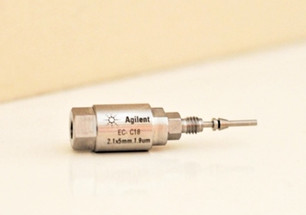15th Nov 2021
ASK BETHANY | Should I Use a Guard Column
HPLC Columns
One of the most important components in an LC system is the column, which is where analytes are separated out from a mixture for qualitative and quantitative analysis. HPLC columns need to be replaced periodically, but there ways to extend the life of the column, and still create accurate, reproducible results. One way of doing so is by using a guard column. Guard columns are a simple, cost-effective way to maximize the life of your LC column.
"Guard columns are a simple, cost-effective way to maximize the life of your LC column"
What is a guard column?
A guard column is essentially a “mini” column, typically no more than an inch or two in length, placed in between the injector and the column. It is installed the same way as an LC column, using HPLC fittings. Its purpose is to filter out impurities that would otherwise stick to the analytical column before they can reach it. The guard should have a similar (or the same) stationary phase as the column, so the analyte does not react differently in the guard and column. The ID of both the guard and the column should be similar to that of the analytical column to prevent back-pressure, and the length should be as small as possible to prevent unwanted dead volume.
Why is using a guard important?
Impurities, such as fatty acids, salts, and proteins can quickly contaminate a column, leading to changing your LC column more often. Guard columns, which are less expensive than the analytical columns, filter out these unwanted impurities prior to reaching the column, meaning changing the analytical column less frequently, and therefore saving money. Filtering out unwanted impurities also leads to results that are easier to read and reproduce as less impurities interfere and interact with the analytical column.
How often should a guard be replaced?
Since impurities can build-up quickly, guards need to be replaced often enough to ensure that the retained material on the guard does not breakthrough onto the column. How often the guard needs to be changed is dependent on multiple factors, such as what solvent you are using and how often you are running your instrument. When the system’s pressure starts building up, that’s often a good sign that the guard column needs to be replaced. Fortunately, guards are quick and easy to replace, so downtime in your lab is minimal. Plus the cost is minimal in comparison to the analytical column, so you save money by prolonging the life of your analytical column. Sample preparation is also important and helpful for keeping your system clear of buildup. Many laboratories use our economical syringe filters prior to injection.
Conclusion
Using a guard column is a great way to increase the productivity of your lab and improve your chromatography results. They are easy to use, and effective at eliminating impurities from your sample. You can reach out to me directly, or contact our friendly sales team for more information regarding LC columns and other chromatography questions!

